Patios & Paths
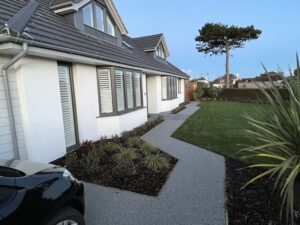
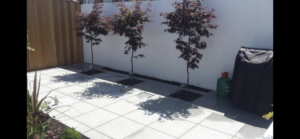
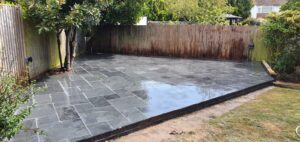
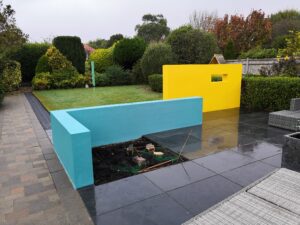
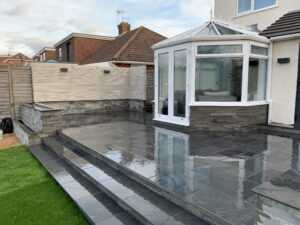
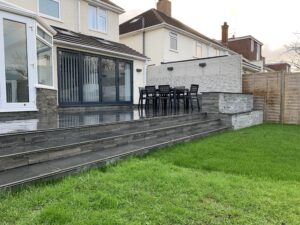
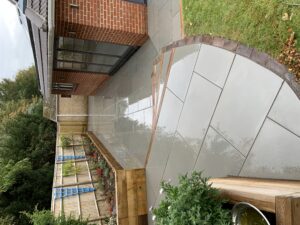
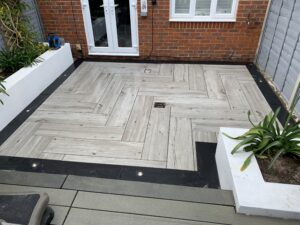

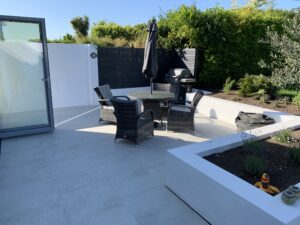
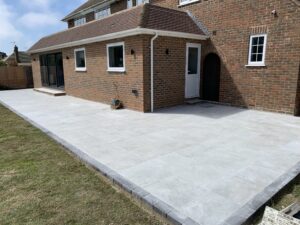
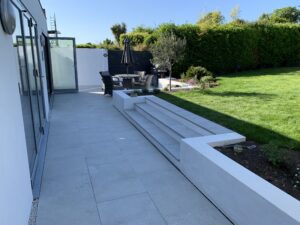
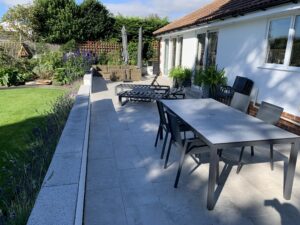
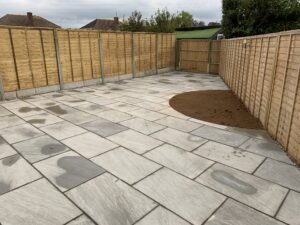
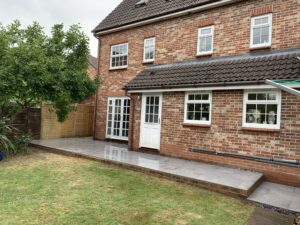
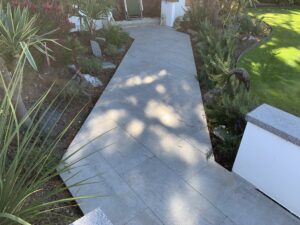
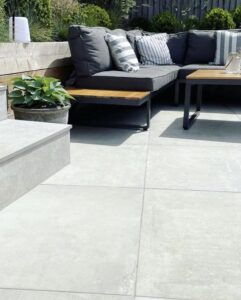
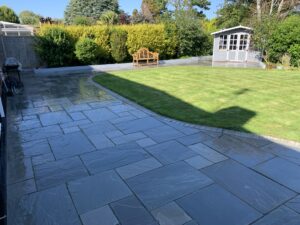
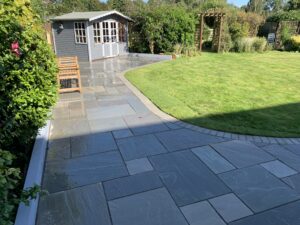
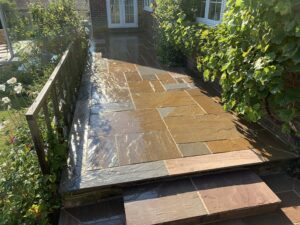
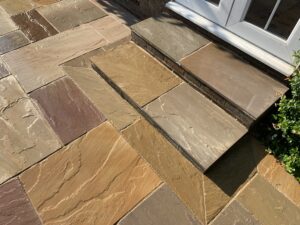
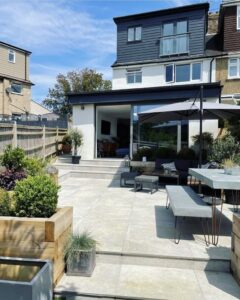 Patios & Path Related Services
Patios & Path Related Services
[/vc_column_text]
- Patio Slabbing
A traditional favourite when it comes to patios and paths, you can’t go to far wrong with slabs. There is a myriad of sizes finishes and now even colours to choose from to achieve the many traditional and more contemporary patterns used today.
- Block Pavers
Block paving is normally associated with driveways but in fact, they’re an excellent choice for garden paths, especially if it’s curved. With circles and hexagons on the market, they don’t just have to be straight lines or herringbone.
- Indian stone
One of my favourite products to use, with varying colours, sizes and finishing you can’t really go wrong. Patio packs come mixed size so they can be laid to a random pattern, or if that’s not for you we can lay one size to many different patterns.
- York Stone
New or reclaimed york stone will defiantly give you the wow factor, Yorkstone is a sandstone and is an option if you’re trying to stick to the traditional look.
- Repair and Rejuvenation
Over time patios can sink or get damaged, this may seem like a problem but it really isn’t. The most common problem with patios is the jointing breaking out, but again it’s an easy fix. Sometimes a good jet wash is all that’s needed to bring your paving back to life.
- Contemporary paving
With such a huge market to choose from if you wanted a contemporary style, the porcelain range or granite are a popular choice, laid half bond (like brickwork) using 600x900mm slabs its a really sleek look.
Pricing
Work Type Average Price per m2 Sanstone Patio £80 Standard slab £70 Repointing patios £25 Patio revival £45 Jetwashing £6.50 Please note: All above prices are a guide, as jobs will be priced individually. Gallery of Recent Patio and Path Projects
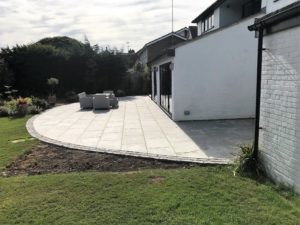
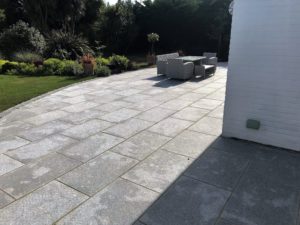
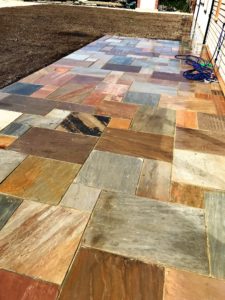
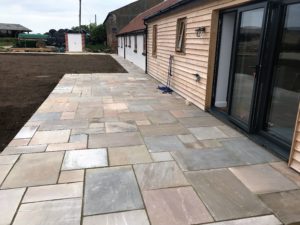
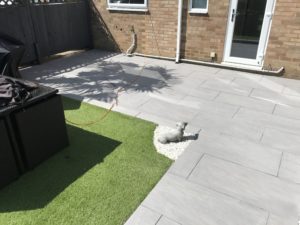
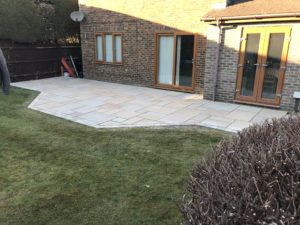
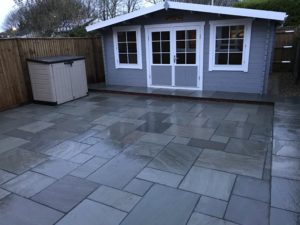
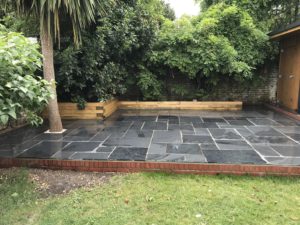
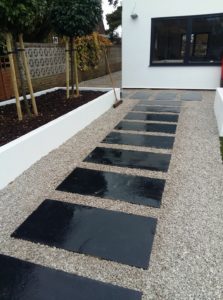
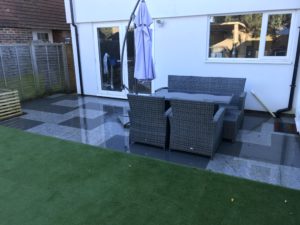
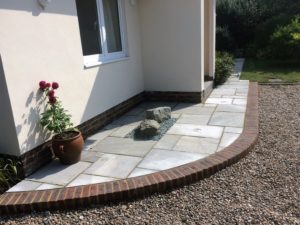
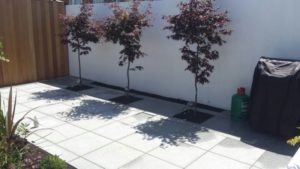
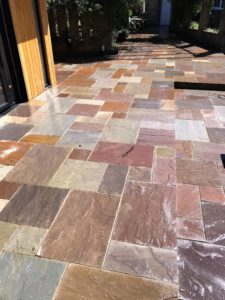
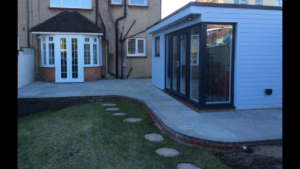
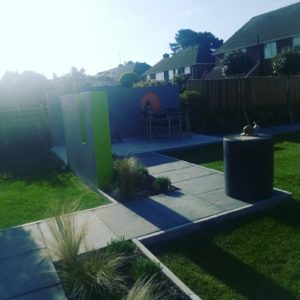
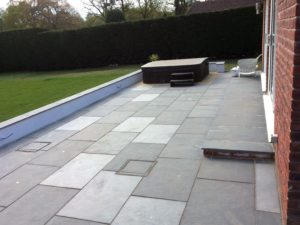
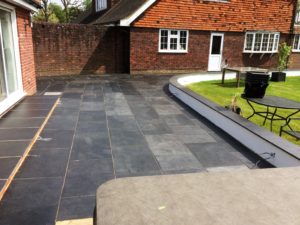
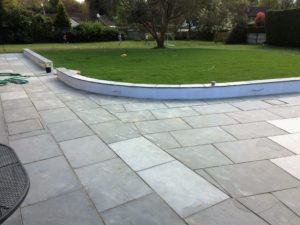
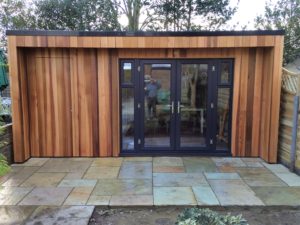
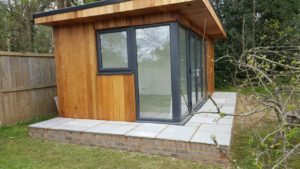
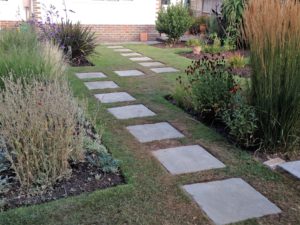
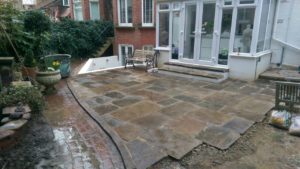
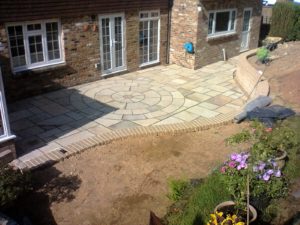
Frequently Asked Questions
- What alternative materials to slabs or gravel can I use for my path?
Mulch or Bark wood chips as they are called give a nice eco feel. Gravel is also nice and easy to lay, just be aware of gravel getting into your lawn – not good for mowers or bystanders for that matter!
- Is sandstone better than concrete for slabs?
We think so, but that’s just our opinion. We just prefer sandstone as the colours are bright and varied and it cleans up well.
- Can a patio be laid on top of my old patio?
As long as the old patio is low enough then yes, but it would need to be in half decent condition as we wouldn’t want any areas sinking. If the patio is laid too high there’s a chance you’ll get damp inside your house, so ideally the patio needs to be 1.5-2 bricks under the damp course of the house.
